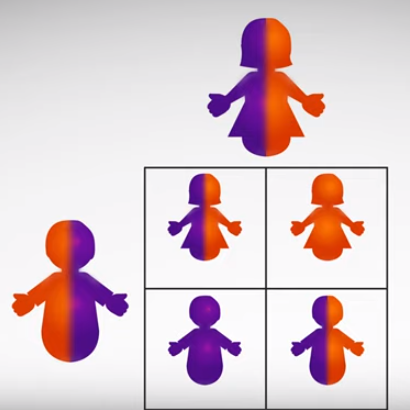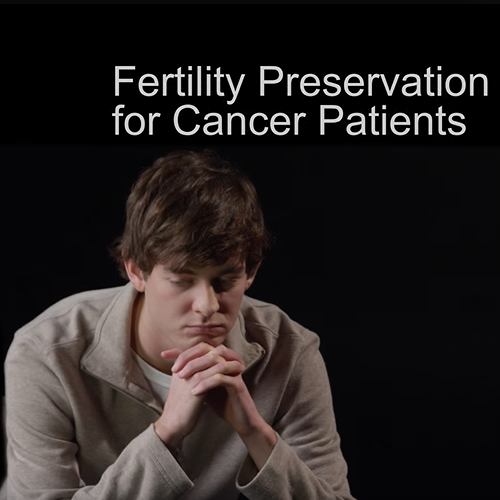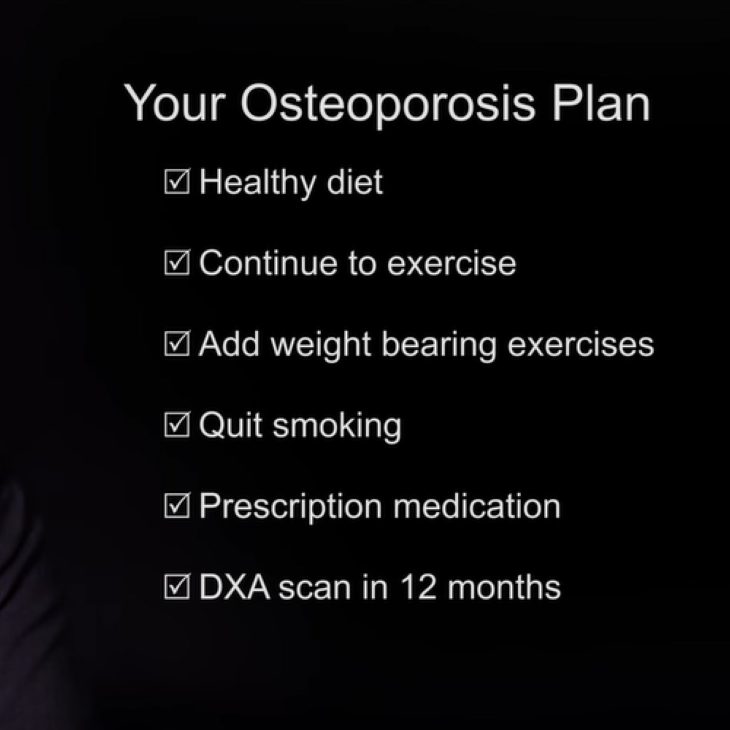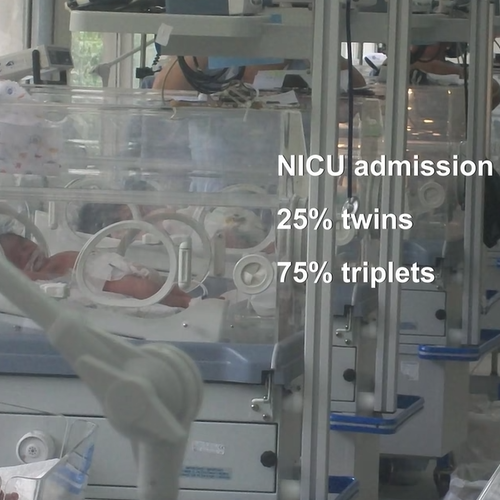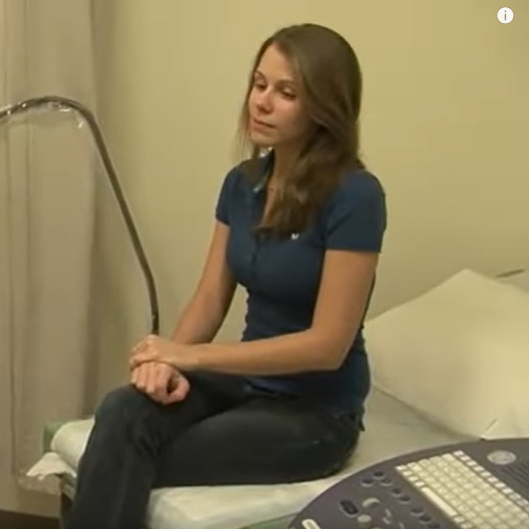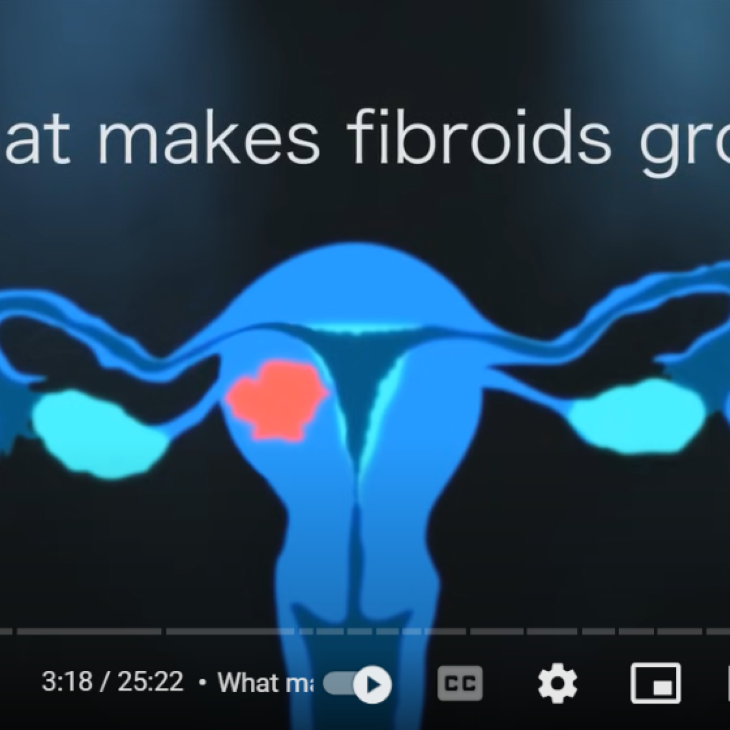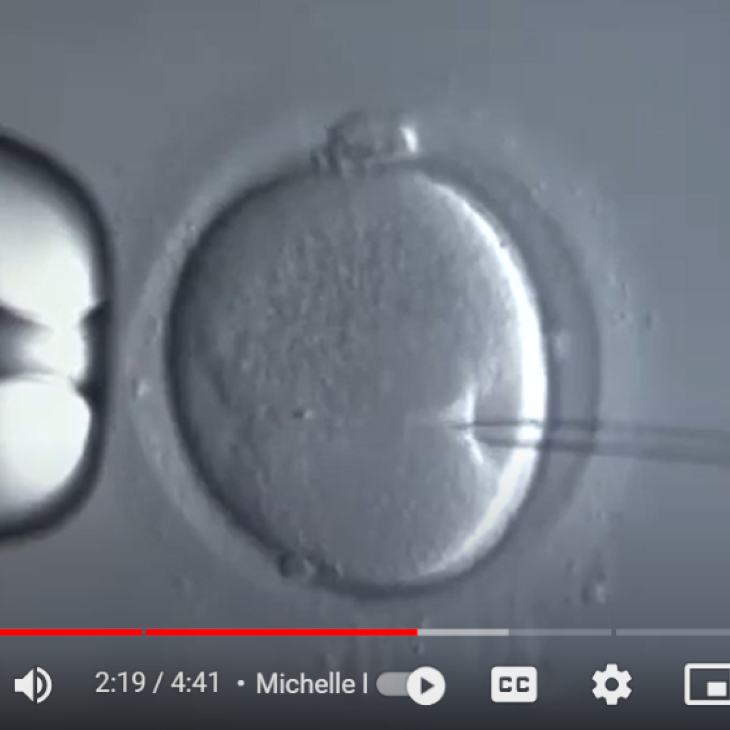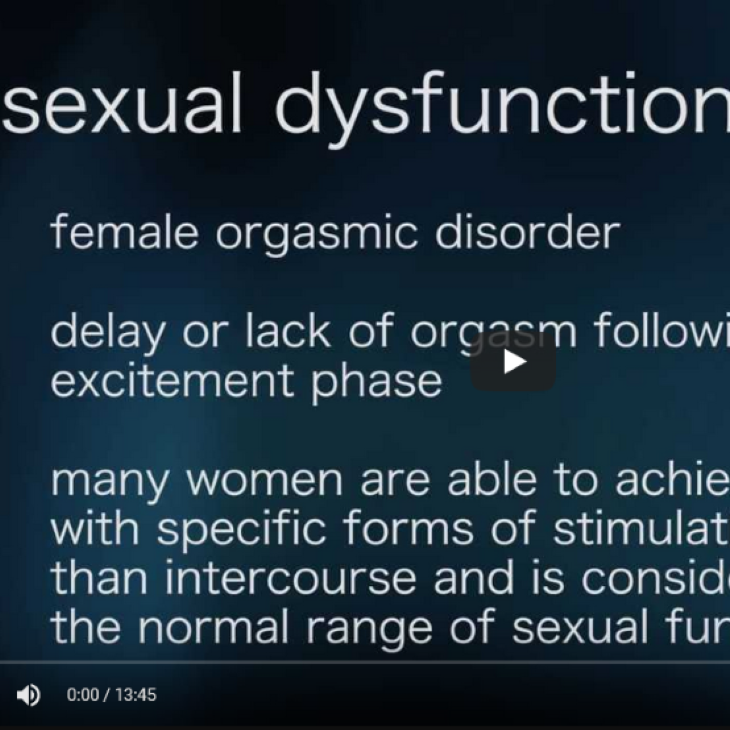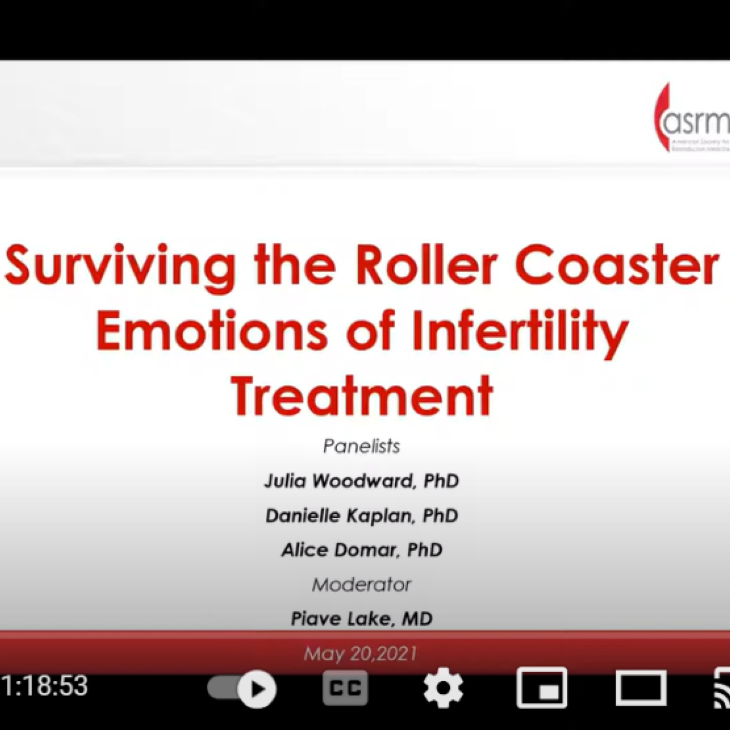
Understanding the SART Clinic Report
During this video we will discuss the SART Clinic Report concepts and demonstrate some of the report features.
Transcript
During this video we will discuss the SART Clinic Report concepts and demonstrate some of the report features.
Hello, I’m Amy Sparks, lab director at the University of Iowa. Today I’ll be presenting how to understand the SART Clinic Report. During this video we will discuss the SART Clinic Report concepts and I'll demonstrate some of the new report features that give providers and patients the ability to view outcomes based on patient and treatment variables.
The SART Clinic Report provides a comprehensive view of outcomes from treatment cycles that are started with the intent to retrieve eggs. These cycles are started within a single calendar year. But the outcome may not be realized until up to two years later. The report is designed to emphasize the optimal outcome of the egg retrieval, the live birth of a healthy baby after a full-term gestation.
Here's the concept of the SART Clinic Report. A patient starts a cycle with the intention of undergoing egg retrieval. The cycle may be cancelled before the retrieval but most patients will get to complete their stimulation and have eggs retrieved. After the retrieval, some patients will have no eggs, no embryos suitable for transfer, or for a variety of reasons may decide not to undergo embryo transfer within a year of egg retrieval. The outcome of the cycle is considered negative. But most patients will have an embryo transfer, either during the fresh cycle or a frozen embryo transfer within a year of the egg retrieval.
The outcome of the first embryo transfer is called the primary outcome. If the primary outcome was negative but additional frozen embryos are in storage, the patient may return for one or more frozen embryo transfers. The outcome of the additional frozen embryo transfers is called the subsequent outcome.
For the reporting year during which a cycle was started for egg retrieval, a live birth resulting from the cycle may occur as a primary outcome or a subsequent outcome. Either outcome contributes to the cumulative outcome of the cycle that was started for egg retrieval. Only one live birth will contribute to the cumulative outcome so it cannot exceed 100%.
Now let’s go to the Clinic Specific Report and look at some of the other features. When you open a clinic report you must agree and abide by the SART Website Terms and Conditions of use. At the top of the page there are four tabs: one that will lead you to a detailed explanation about the report, one for outcomes for cycles using patient’s eggs, one for donor egg cycles, and the fourth tab opens the filters that allow you query the data for outcomes based on patient and treatment variables. When you select the patient’s own eggs tab, additional tabs appear to lead you to the cumulative, primary, and subsequent outcomes.
There’s also a table called the live birth per patient table which provides a unique look at the overall live birth rate for patients who are new to the clinic during the reporting year. Regardless of how many or the type of cycles the patients undergo, you’ll see the outcomes for those patients within the year.
As you can see in the cumulative outcome table, the singleton live birth rate for each age group is highlighted. Proportions of deliveries that were term, preterm, and very preterm have been added to the outcome information.
Additionally, below each table you will find a stacked bar graph of the singleton, twin and triplet birth rate as well as the during of gestation for each age group. You can look at the impact transferring more than one embryo has on these rates by clicking on the compare number transferred box and selecting the number of embryos. Additional data for each age group may be revealed by selecting the show cycle characteristics or the show pregnancy outcome buttons.
The most engaging feature of the clinic report is ability of the user to query the data. The filter tab is in the upper right corner and when you select it you have access to selecting the reporting year, cycle type, patient diagnosis, and include or exclude treatment variables. Once you build your query, you simply apply the filter and the data tables are generated based on your criteria.
Finally, you may be asking why this report is a preliminary report. This report is for 2014 and the cycle finalization deadline for 2016 has not yet passed. 1.4% of the primary cycles had delayed outcomes because the first transfer was a frozen embryo transfer and the birth had not occurred by the reporting deadline in 2015. These delayed cycle outcomes will be concluded in 2016. And once they are completed, the labels will be changed from preliminary to final.
Thanks for watching. Please don’t hesitate to contact SART if you have any questions.
Videos
Resources For You
In Vitro Fertilization (IVF)
ASRM Releases Congressional Scorecard
Discover ASRM's first Congressional scorecard, detailing positions of the 118th Congress on key reproductive legislation to guide ASRM members in elections.
View the Press ReleaseFertility Care Gets Important Win in California
ASRM celebrates California's SB 729, expanding IVF coverage for same-sex couples and singles, advancing equitable fertility care access.
View the Press ReleaseNation’s Leading Professional Group for Fertility Care Professionals Calls for Passage of Right to IVF Act
ASRM applauds Majority Leader Schumer’s decision to seek reconsideration of the Right to IVF Act.
View the Press ReleaseSART Fertility Experts - Vanquishing Multiples
Learn how a variety of factors such as geography, race, and the availability of comprehensive infertility mandates affect access to effective infertility treatment. Listen to the EpisodeTrump Calls for IVF Coverage, California Legislature Sends IVF Mandate Bill to Governor
The California General Assembly approved a bill mandating most private health insurance plans to provide coverage for In Vitro Fertilization (IVF).
View the Press ReleaseAdvocacy in Action
Join the ASRM Advocacy in Action campaign by making a tax-deductible charitable gift Be part of Advocacy in ActionGet Vot-ER Ready This National Patient Advocacy Day!
Celebrate National Patient Advocacy Day by boosting civic engagement! Order your free Vot-ER badge to help patients register to vote and promote healthy communities.
View the Press ReleaseSART Fertility Experts - Global Access to IVF and the Status of Women
Around the world, there are vast differences in the number of IVF cycles performed per capita. Learn why these differences exist. Listen to the EpisodeASRM marks World IVF Day by doing what we do best – advocating for access to reproductive health care by calling for a House floor vote on the Right to IVF Act
ASRM observed World IVF Day, the day marking the birth of the world’s first IVF baby in 1978, by continuing its advocacy for improvements in IVF policy.
View the Press ReleaseOrder your FREE Vot-ER badge to encourage your friends to vote!
ASRM) is pleased to announce our partnership with Vot-ER, a grassroots organization dedicated to driving civic engagement among healthcare professionals.
View the Press ReleaseASRM Calls for Passage of Family Building Bill
It would increase access to IVF treatments for all Americans, including active-duty service members, veterans, and federal employees.
View the Press ReleaseASRM publishes IVF one-pagers for media use
The documents lay out the clinical IVF process, summarize oversight of IVF in the U.S., and explain how lawmakers can support access to IVF.
View the Press ReleaseASRM Reacts to Cruz/Britt OPED
We are pleased to see Senators Cruz and Britt express their interest in protecting access to IVF.
View the Press ReleaseASRM Files Amicus Brief in Texas Embryo Case
ASRM has filed an amicus curiae (friend of the court) brief in the case of Antoun v Antoun, which is pending before the Texas Supreme Court.
View the Press ReleaseSART Fertility Experts - Recurrent Pregnancy Loss and Implantation Failure
"I can get pregnant, but I can't stay pregnant," is echoed by patients with recurrent pregnancy loss. Listen to the EpisodeSART Fertility Experts - Navigating IVF as a Couple
Mary Casey Jacob, PhD is interviewed by Dr. Daniel Grow, and together they explore the emotional and practical support that couples need. Listen to the EpisodeFertility Rights and Responsibilities
Can a fertility program or clinic deny treatment to patient(s) if there is concern about the ability to care for the child(ren)? Yes. Fertility programs can withhold services if there are signs that patients will not be able to care for child(ren). View this Fact SheetProgesterone supplementation during IVF
Progesterone is a hormone produced by the ovary. View the fact sheetSide effects of injectable fertility drugs (gonadotropins)
Gonadotropins are fertility medications given by injection that contain follicle-stimulating hormone (FSH) alone or combined with luteinizing hormone (LH). View the fact sheetWhat do I need to know about conceiving after surgery on my Fallopian tubes?
Fallopian tubes connect the ovary (where the eggs are stored and grow) to the uterus (womb), where the fertilized egg develops into a baby (fetus). View the fact sheetHydrosalpinx
The fallopian tubes are attached to the uterus (womb) on the left and right sides. View the Fact SheetIn vitro fertilization (IVF): what are the risks?
IVF is a method of assisted reproduction in which a man’s sperm and a woman’s eggs are combined outside of the body in a laboratory dish. View the fact sheetWhat is In Vitro Maturation (IVM)?
In vitro maturation (IVM) is when a woman’s eggs are collected and matured outside the body. This is done as part of an in vitro fertilization (IVF) procedure. View the fact sheetSART Fertility Experts - Recurrent Pregnancy Loss
Candace discusses her experience with infertility, IVF, multiple pregnancy losses and ultimately a successful delivery with Dr. Julia Woodward.Listen to the Episode
SART Fertility Experts - Infertility Advocacy and Government Affairs
In today's episode, Dr. Mark Trolice interviews Sean Tipton about the fact that many infertility patients do not have insurance coverage for treatment. Listen to the EpisodeSART Fertility Experts - Behind the Scenes in the IVF Lab
Dr. Sangita Jindal, helps patients understand the importance of the IVF lab when choosing an IVF program. Listen to the EpisodeSART Fertility Experts - Your Infertility Nurse: Partner in Your Care
Infertility nurse practitioner and health coach Monica Moore explains the essential role of the infertility nurse in the IVF process. Listen to the EpisodeSART Fertility Experts - Genetics and IVF
Genetics is a significant part of advanced reproductive technology screening. Listen to the EpisodeIntracytoplasmic sperm injection (ICSI)
A procedure called intracytoplasmic sperm injection (ICSI) can be done along with in vitro fertilization (IVF) if a sperm cannot penetrate the outer layer of an egg. Read the Fact SheetSART Fertility Experts - Fertility and LGBTQ
In this episode, Dr. Daniel Grow interviews Dr. Mark Leondires, the founder of Gay Parents To Be. Listen to the EpisodeSART Fertility Experts - What is an REI?
These experts in infertility lead IVF programs, perform reproductive surgery, and perform research to enhance the field of reproductive medicine. Listen to the EpisodeSART Fertility Experts - What is IVF?
In this episode, we discuss the ins-and-outs of in vitro fertilization (IVF). Listen to the EpisodeStart with SART
The very first thing you should do when evaluating a clinic is verify that it is a member of SART. Watch VideoPreparing for In Vitro Fertilization (IVF): Lifestyle Factors
This SART micro-video discusses lifestyle factors that may affect in vitro fertilization, or IVF, outcomes. Watch VideoAssisted Reproductive Technologies (booklet)
This booklet will help you understand in vitro fertilization (IVF) and other assisted reproductive technology (ART) that have become accepted medical treatments for infertility. View the BookletThe Difference Between IUI and IVF
It is important to know Intrauterine insemination (IUI) or In vitro fertilization (IVF) can both be successful at helping grow your family. Watch VideoUnderstanding the SART Clinic Report
During this video we will discuss the SART Clinic Report concepts and demonstrate some of the report features. Watch VideoInfertility: an Overview (booklet)
Infertility is typically defined as the inability to achieve pregnancy after one year of unprotected intercourse. View the bookletKristen Ritchie's Story
I spent seven years navigating infertility, which was tumultuous but also a period of tremendous personal growth in hindsight. Read the storyIn Vitro Fertilization Infographics
ASRM has prepared infographics to illustrate the subject of in vitro fertilization (IVF) better. View the infographicsSART FAQ About IVF
Created by the Society for Assisted Reproductive Technology (SART) the following are answers to frequently asked questions concerning in vitro fertilization (IVF). Learn the factsIt takes more than one
Why IVF patients often need multiple embryos to have a baby View the advocacy resourceWhat support for IVF looks like
Bipartisan support for IVF, that is responsible for the birth of over 2% of all babies born in the USA each year, will ensure that families continue to grow. View the advocacy resourceOversight of IVF in the US
In the US, medical care is regulated by a complex and comprehensive network of federal and state regulations and professional oversight. View the advocacy resourceAssisted Reproductive Technologies
Find a Health Professional




